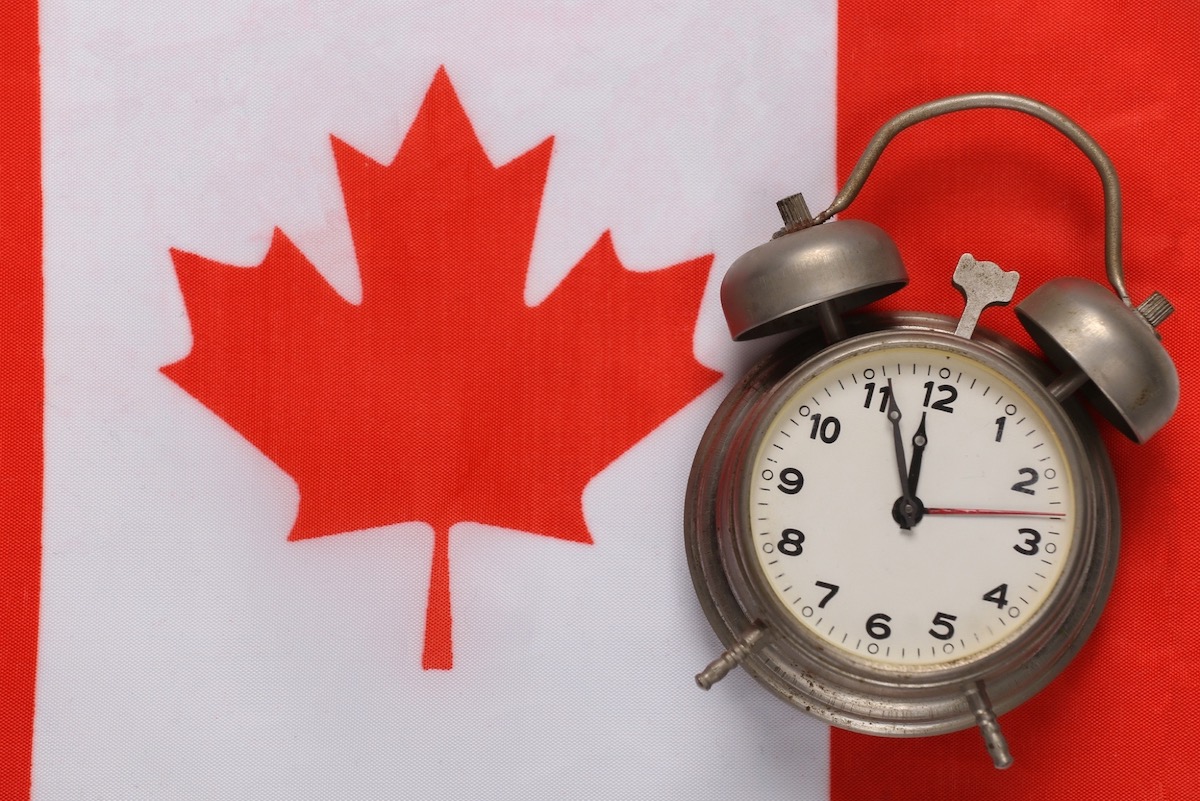Stay on our site to read and learn more about Canada’s Time Change February 2024: When will the time change in Canada (Daylight Savings Time)?
Change of Time in Canada in February 2024
The Canadian The act of moving the clocks forward or backward by one hour is called “time change.” The goal of extending sunshine an hour later in the morning is to make the most of it later in the evening.
Most of Canada follows the Canada Time Change, but there are a few isolated places in British Columbia and parts of Saskatchewan that don’t. Canada has Time Change for about 34 weeks (238 days) a year, which is more than 65% of the year.
There is more information about the Canada Time Change in February 2024 that you need to read this post to fully understand.
How to Understand the Time Change in Canada
In Canada, the clocks are set one hour ahead of Standard Time during the summer and back to Standard Time in the fall. This is called Canada Time Change or Daylight Saving Time. In the spring, when the clocks go forward by one hour, the nights get brighter. In the fall, when the clocks go back by one hour, the mornings get brighter.
Each Canadian town has its own rules about whether or not to use DST. For this reason, some places don’t follow the DST schedule of some provinces and regions. So, nine of Canada’s ten provinces and two of its three territories follow daylight saving time (DST). Nunavut and some other provinces don’t.

Canada used Daylight Saving Time from 1908 to 2024. The basic idea is that this will help all of us make better use of natural light. A lot of people don’t like DST, and they have good reason to!
Changes to The Time in Canada in February:
| Article Name | Canada Time Change February 2024 |
| Observed In | Canada and America |
| Total Observing Canadian Provinces | 9 provinces |
| Starting Year | 1908 |
| Canada Time Change Date | 2 a.m. EST on Sunday, March 10 to a.m. EST on Sunday, November 3 |
When Does Canada’s Time Change for Daylight Saving Time in 2024?
Time changes are made every year on the second Sunday in March and the first Sunday in November. The “fall back” time will be 2 a.m. EST on November 3, 2024, and the “spring forward” time will be 2 a.m. EST on March 10, 2024.
To “spring forward,” clocks are pushed forward by one hour on Saturday night. This means that you lose one hour. The sun will rise and set about an hour later on March 10, 2024, than the day before. In the evening, it will get lighter. One hour is added to the clocks on Saturday night so that we can “fall back.” The sun will rise and set about an hour earlier on November 3, 2024, than the day before. When dawn comes, there will be more light.
In the past, daylight saving time was used from the end of February to the end of October. The forms that are used now, for March and November, were changed in the middle to late 2000s.
History of Canada’s Time Change

Benjamin Franklin came up with the first known plan to “save” daylight in “An Economical Project,” which was written in 1784. It was funny because it called for laws that would force people to get up early to save money on lights. But the first person who supported Daylight Saving Time was an Englishman named William Willet. He came up with the idea in 1907.
In 1908, Canada was the first country to use Daylight Saving Time. It was July 1, 1908, in Port Arthur, Ontario, which is now called Thunder Bay. That was the first day of daylight saving time (DST). Similar actions were quickly taken by other Canadian towns. DST was first used in Regina, Saskatchewan, on April 23, 1914. On April 24, 1916, the cities of Winnipeg and Brandon in Manitoba did the same thing.
Final Words
The clocks will still be changed twice a year, even though many Canadians don’t like having to “spring forward” and “fall back” every year. Since no major legislation about daylight saving time (DST) was made in 2023, the clocks will go forward again on March 10.
| Important Links |
| 1. Canada Retirement Age |
| 2. Canadian High Dividend Stocks |
| 3. How old is Canada as a country |
| 4. Hidden Benefits of ODSP |
A lot of people have trouble remembering which way the clock goes when the time changes. “Spring forward, fall back” is a simple phrase that can help. Please be aware that Daylight Saving Time will start at 2 a.m. EST on Sunday, March 9 for “spring forward” and at 2 a.m. EST on Sunday, November 2 for “fall back.”
Thanks for reading this page about the time change in Canada in February 2024. Please come back to our site for more interesting and up-to-date subjects.

